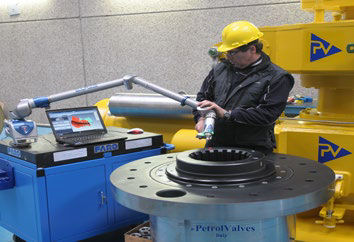Reverse Engineering with 3D Measurement
Latest News
April 15, 2014
 Dear Desktop Engineering Reader:
Dear Desktop Engineering Reader:
The everyday lingo of engineers and scientists can take a beating when mass media and talk radio Chicken Littles get wind of it. In design engineering a few years back, the uninitiated’s jammies got all bunched up by conflating reverse engineering with software piracy until something vital like Janet Jackson’s wardrobe malfunction displaced it. How I wished that I could have waved at some people a copy of the paper that today’s Check it Out link leads to.
“Reverse Engineering with 3D Measurement” from FARO Technologies does a fine job of explaining what reverse engineering is and why it is important for engineering outfits large and small. It takes a brief look at how reverse engineering operates, and makes a good case in favor of portable CMMs (coordinate measuring machines) as opposed to conventional fixed-position CMMs, without trashing traditional CMM machinery.
 The discussion on why you might want to scan in an object for which you have no CAD file, drawing or documentation so you can reverse engineer it is well stated for anyone looking to learn more on this topic. This segment is, perhaps, ideal for those less-technical people you work with, such as marketing, financial and, sigh, legal.
The discussion on why you might want to scan in an object for which you have no CAD file, drawing or documentation so you can reverse engineer it is well stated for anyone looking to learn more on this topic. This segment is, perhaps, ideal for those less-technical people you work with, such as marketing, financial and, sigh, legal.
For those of you familiar with reverse engineering and who are building a proposal for the honchos, this section can serve as a terrific checklist of points you can map to the needs of your enterprise as you hammer home your reasoning. It goes well beyond such pat motives as to build a replacement part for a machine no longer manufacturer-supported. It touches upon a range of matters, from evaluating a competitor’s product to creating documentation to building a CAD model of a part that has no digital model so that you can run some analyses on it.
The case for portable CMMs — movable 3D measurement arms — vs. fixed CMMs is straightforward. You can bring the CMM to a large part that would be a hassle to move to an immobile CMM. They do not require a controlled environment, nor do they cost as much. In keeping with industry trends moving away from contact probing, you can also attach a laser scanner to a measurement arm to obtain quick and accurate non-contact measurements. A further benefit of a portable CMM equipped with a laser scanner is that you can take good measurements of complex objects as well as soft objects that can easily misshape if you touch them.
To better describe the portable CMM laser non-contact scanning process, the paper uses the FARO ScanArm for its example. An interesting feature of this device is that it can accommodate a laser line probe that is small enough to give you the option of contact or non-contact probing without changing the arm itself. The paper quickly outlines the laser’s triangulation positioning process as well as the interaction between the laser light and camera in easy to grasp terms. Like before, this brief discussion can be a suitable basis for developing your checklist for the checkbook keepers.
The paper concludes with two very brief case studies. The first looks at how Andretti Autosport reverse engineers “sanctioned” parts and carbon fiber components. The second case study is perhaps a bit more important because it brings up another excellent reason to have a CMM in your arsenal. An outfit called Trinity Forge, a close-die forging plant, uses its CMM to inspect dies coming off of their CNC (computer numerically controlled) machines to track for wear as well as for reverse engineering.
“Reverse Engineering with 3D Measurement” is a quick-to-read, five-page PDF document. For anyone interested in reverse engineering with scanning devices, it can provide a basic literacy in the concept. For those building the case for an in-house CMM ability, you’ll find it a good source of data points to build your case.
Thanks, Pal. – Lockwood
Anthony J. Lockwood
Editor at Large, Desktop Engineering
Subscribe to our FREE magazine, FREE email newsletters or both!
Latest News
About the Author
Anthony J. Lockwood is Digital Engineering’s founding editor. He is now retired. Contact him via [email protected].
Follow DE





